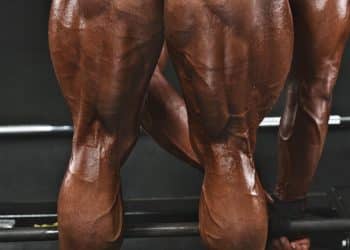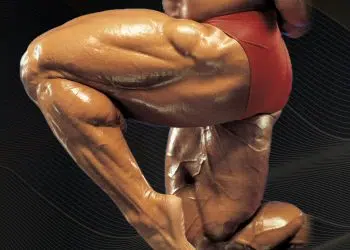According to many fitness and bodybuilding gurus, squats are the only exercise you need to develop incredible legs. Many of these influencers go on to suggest that squats are such a potent exercise they have the power to transform your physique. Whatever your goal, they say, squats are all you need.
Frankly, it’s surprising none of them have said that squats can cure cancer, fix the National Debt, or are the cure to the obesity epidemic!
There is no denying that squats are a fantastic exercise and have the potential to build unparalleled levels of muscle size and strength. In fact, entire workouts have been built around squats, including the world-famous old-school 20-rep squat routine.
That said, while squats deserve many of the accolades lavished on them, they also have disadvantages and drawbacks. The main one being that they won’t do much for your hamstring development. As such, squats fall short of being the only leg exercise you’ll ever need.
In this article, we explain why squats aren’t great for building your hamstrings and provide you with a tried and tested workout for beefing up your leg biceps.
The Anatomy of the Hamstrings
While you don’t need a degree in anatomy and biomechanics to build your best-ever hamstrings, understanding how the hamstrings work will help you make more informed decisions about how to train them. It will also help explain why some exercises work better than others for bulking up your leg biceps.
Level Up Your Fitness: Join our 💪 strong community in Fitness Volt Newsletter. Get daily inspiration, expert-backed workouts, nutrition tips, the latest in strength sports, and the support you need to reach your goals. Subscribe for free!
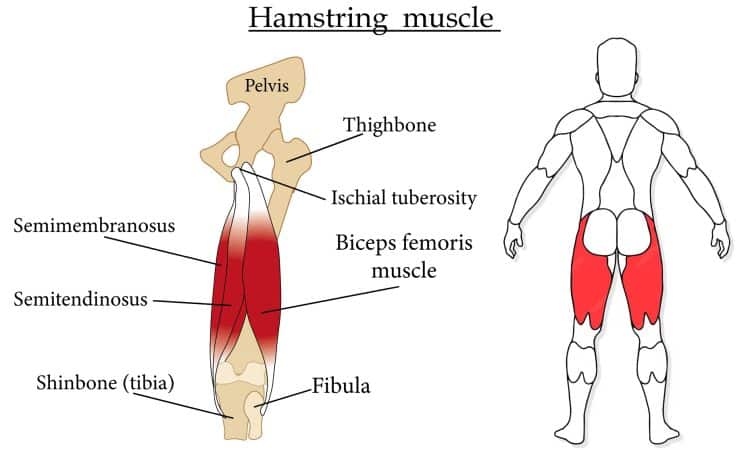
Firstly, the hamstrings are so-called because of an Old English livestock/butchery term (1). “Ham” refers to the hollow or bend at the back of the knee and is also a word for the meat from a pig’s rear thigh.
In contrast, “string” refers to the visible and palpable tendons at the back of the knee. In livestock, these tendons were commonly used to hang or “string” up hams (the hind legs) for curing or smoking, which is another reason the term “hamstring” came into use.
The hamstrings are a biaxial muscle, which means they cross two joints, i.e., the knee and hip. As such, they affect both these joints. Rather than being one muscle, the hamstrings are actually a group of three muscles that function together to flex your knee (e.g., during leg curls) and extend your hip (e.g., during hip thrusts).
The three muscles that make up the hamstrings are (2):
Semitendinosus:
The semitendinosus originates from the ischial tuberosity, which is the base of your pelvis and colloquially known as your sitting bone. It attaches to the medial surface of the tibia, which is the inner bone of your lower leg.
Semimembranosus:
Next, the semimembranosus also starts from the ischial tuberosity and connects to the medial condyle of the tibia, near the knee. Functionally, it works similarly to the semitendinosus, aiding in both knee flexion and hip extension.
Biceps Femoris:
Lastly, the biceps femoris is unique in that it has two heads. The long head originates at the ischial tuberosity, while the short head begins along the linea aspera of the femur. It attaches to the head of the fibula and the lateral condyle of the tibia.
Summary
| Muscle | Origin | Insertion | Function |
| Semitendinosus | Ischial tuberosity | Medial surface of tibia | Knee flexion, hip extension |
| Semimembranosus | Ischial tuberosity | Medial condyle of tibia | Knee flexion, hip extension |
| Biceps Femoris | Ischial tuberosity (long head), linea aspera (short head) | Head of fibula and lateral condyle of tibia | Knee flexion, hip extension |
Now you know a little more about the anatomy and physiology of the hamstrings, let’s move on to why squats and similar exercises are not the best way to develop them.
The Limitations of Conventional Leg Exercises
As you have learned, the hamstrings are basically the biceps of your leg. In fact, one of the muscles that comprise your hamstrings is literally called your leg biceps – the biceps femoris.
As such, developing your quadriceps and hamstrings equally is much like working both your biceps and triceps for your arms. It’s a must for building balanced strength and optimal aesthetics.
However, despite this obvious relationship, some people still believe that squats, leg presses, lunges, and other compound leg exercises are all you need to build muscular, strong hamstrings. This is akin to trying to build your biceps with bench presses.
Yes, the biceps ARE involved in bench presses, but they don’t really receive sufficient stimulation to strengthen or build them. Rather, as every bodybuilder knows, if you want big biceps, you must train them separately. The hamstrings are no different.
This confusion stems from the fact that squats, leg presses, etc., involve knee extension AND hip extension, and hip extension is one of the functions of the hamstrings. So, this should mean that the hamstrings are getting a good workout during squats.
So, why don’t they? The answer lies in something called Lombard’s Paradox.
Lombard’s Paradox Explained
Lombard’s Paradox is a biomechanical phenomenon that explains why some exercises are better for hamstring development than others.
Simply put, Lombard’s Paradox explains that, during movements like squats and walking, the quadriceps and the hamstrings contract at the same time, even though they have antagonistic or opposing functions. While this might sound impossible, it’s actually a natural mechanism that helps provide stability for the knee joint (3).
When the quads and the hamstrings contract simultaneously, they all but cancel each other out. So, while your hamstrings are active during squats, they’re not the primary movers.
Instead, they act more like stabilizers, leaving the quadriceps to do most of the work. Hip extension is mainly the result of your gluteus maximus, the largest and potentially the most powerful muscle in the human body.
In fact, because your knees are moving at the same rate as your hips, the length of your hamstrings doesn’t really change much during squats. This means they’re working almost statically or isometrically, which is not an efficient way to build either size or strength.
Studies suggest that, in squats, leg presses, and other conventional compound leg exercises, about 75% of the work is performed by the quadriceps. In comparison, only 25% is done by the hamstrings (4). This helps explain why relying on compound leg exercises to build your hamstrings won’t work. Yes, the hamstrings ARE involved, but their contribution is relatively small. Because of this, they need to be trained directly.
Now that you understand the limitations of traditional leg exercises for building stronger, more muscular hamstrings, let’s dive into a specialized workout designed to target and develop your lagging leg biceps.
The Best Hamstring Workout for Monster Leg Biceps
The best way to develop any lagging muscle group is with a targeted workout that addresses all the functions of that particular body part. Regarding the hamstrings, that means more than a couple of sets of leg curls after squats.
With that in mind, this workout has been designed to target the knee flexion and hip extension functions of the hamstrings and train the hamstrings at varying lengths to ensure you stimulate all available muscle fibers.
Do this workout 1-2 times a week to turn your hamstrings from something you want to hide into a muscle group you can be proud of. But before you begin, make sure you spend a little time warming up and preparing your muscles and joints for what is to come.
Begin with 5-10 minutes of easy cardio to raise your core temperature and get your blood pumping. Next, do dynamic mobility and flexibility exercises for your ankles, knees, hips, and lower back. Finish your warm-up with a couple of practice sets of your first 1-2 exercises.
Ready? Then let’s get to work!
| # | Exercise | Sets | Reps | Recovery |
| 1a | Seated leg curl | 4 | 12-15 | 2 minutes |
| 1b | Romanian deadlift | 4 | 6-8 | |
| 2 | Barbell hip thrust | 3 | 10-12 | 90 seconds |
| 3 | Standing cable leg curl | 3 | 12-15 | 90 seconds |
| 4 | Kettlebell swings | 3 | 15-20 | 90 seconds |
| 5 | Nordic curls | 2 | AMRAP* | 90 seconds |
Exercises 1a and 1b are to be done as a superset. Do your set of seated leg curls, and then immediately do a set of Romanian deadlifts. Rest for the allotted time and repeat the pairing three more times to make four supersets.
*AMRAP = as many reps as possible. Just rep out until you cannot control the eccentric or lowering phases of the exercise.
Exercise Descriptions
There are two ways to do any exercise – the right way and the wrong way. The right way is safe and effective, keeping the tension on the target muscles and away from nearby muscles and joints. The wrong way often takes work away from the muscles you are training and puts it on areas best not loaded, such as your lower back.
With that in mind, here are step-by-step instructions for the exercises in our monster hamstring workout.
Level Up Your Fitness: Join our 💪 strong community in Fitness Volt Newsletter. Get daily inspiration, expert-backed workouts, nutrition tips, the latest in strength sports, and the support you need to reach your goals. Subscribe for free!
1a. Seated Leg Curl
You are probably wondering why we’re starting our self-certified awesome hamstring workout with something as conventional as the seated leg curl. The answer is pretty simple: it’s a fantastic exercise! Seated leg curls start with your hamstrings in a very stretched position, which studies suggest can lead to greater hypertrophy. The seated leg curl is a reliable hamstring builder, especially when paired with Romanian deadlifts.
Steps:
- Adjust the backrest and sit on the machine so your knees are aligned with the lever arm pivot point. Set the leg pad across your thighs and the roller so it’s toward the bottom of your calf.
- Contract your hamstrings and squeeze the weight up – no kicking or jerking.
- Pull your feet toward your butt and hold the peak contraction for 2-3 seconds.
- Smoothly extend your legs, stopping just before the weights touch down.
- Repeat for the prescribed number of reps and then move quickly to the next exercise.
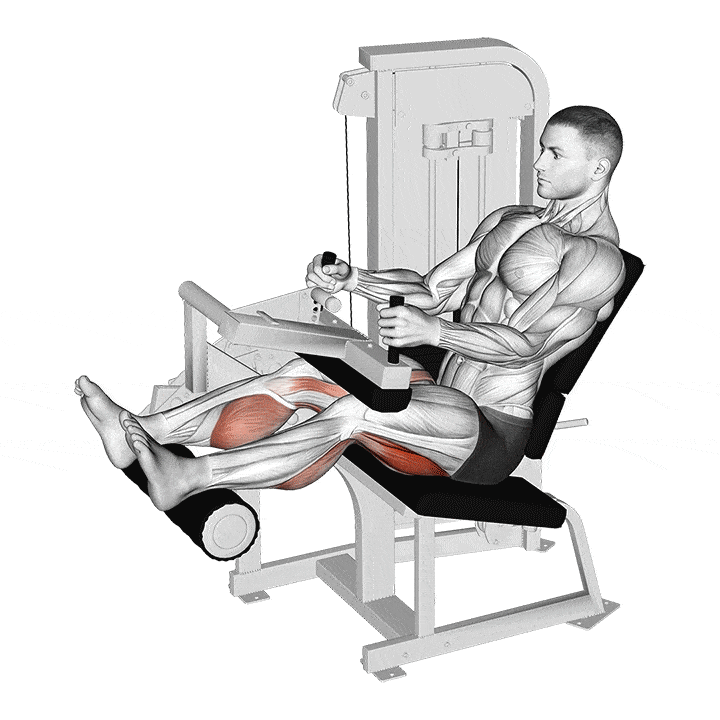
Tips:
- Squeeze, don’t jerk the weight up. Momentum is not your friend!
- Relax your ankles and point your toes to take your gastrocnemius out of the movement, and make sure your hamstrings are doing all the work.
- Grip the handles and extend your arms to press your lower back into the seat. Do not allow your hips to be pulled forward.
1b. Romanian Deadlift
Where leg curls are all about knee flexion, RDLs work the hip extension function of your hamstrings. Pairing these two exercises means you hit your hammies from both ends back to back, providing an intense workout that’ll leave you sore for days. So, when you can bend over to tie your shoes tomorrow, you can blame us!
Steps:
- Hold a barbell with an overhand shoulder-width grip. Stand with your feet about hip-width apart, knees slightly bent. Pull your shoulders back and down and brace your core.
- Push your hips back and lean forward, lowering the barbell down the front of your legs. Descend as far as you can without rounding your lower back.
- Drive your hips forward and stand back up, taking care not to lean backward at the top of your rep.

Tips:
- The further you push your hips back, the bigger the stretch in your hamstring, and the more effective the exercise will be.
- Tuck your chin in and lengthen your neck. Do not lift your head as you lean forward, as doing so increases cervical spine stress.
- Consider wearing a weightlifting belt and using lifting straps so you can move more weight.
2. Barbell hip thrust
The barbell hip thrust is sometimes viewed as a “girlie” glute and hamstring exercise, possibly because of its popularity with booty models and influencers. That’s a shame because men can benefit from this exercise. It’s a low-back-friendly hamstring exercise that you can load heavily and train to failure. So, what’s girlie about that?!
Steps:
- Sit on the floor with your legs straight and your upper back resting against a sturdy workout bench.
- Roll a barbell up your legs so it’s across your hips.
- Bend your legs and plant your feet firmly on the floor.
- Drive your feet into the floor and lift your hips so they form a straight line between your knees and shoulders.
- Lower your butt back to the floor and repeat.
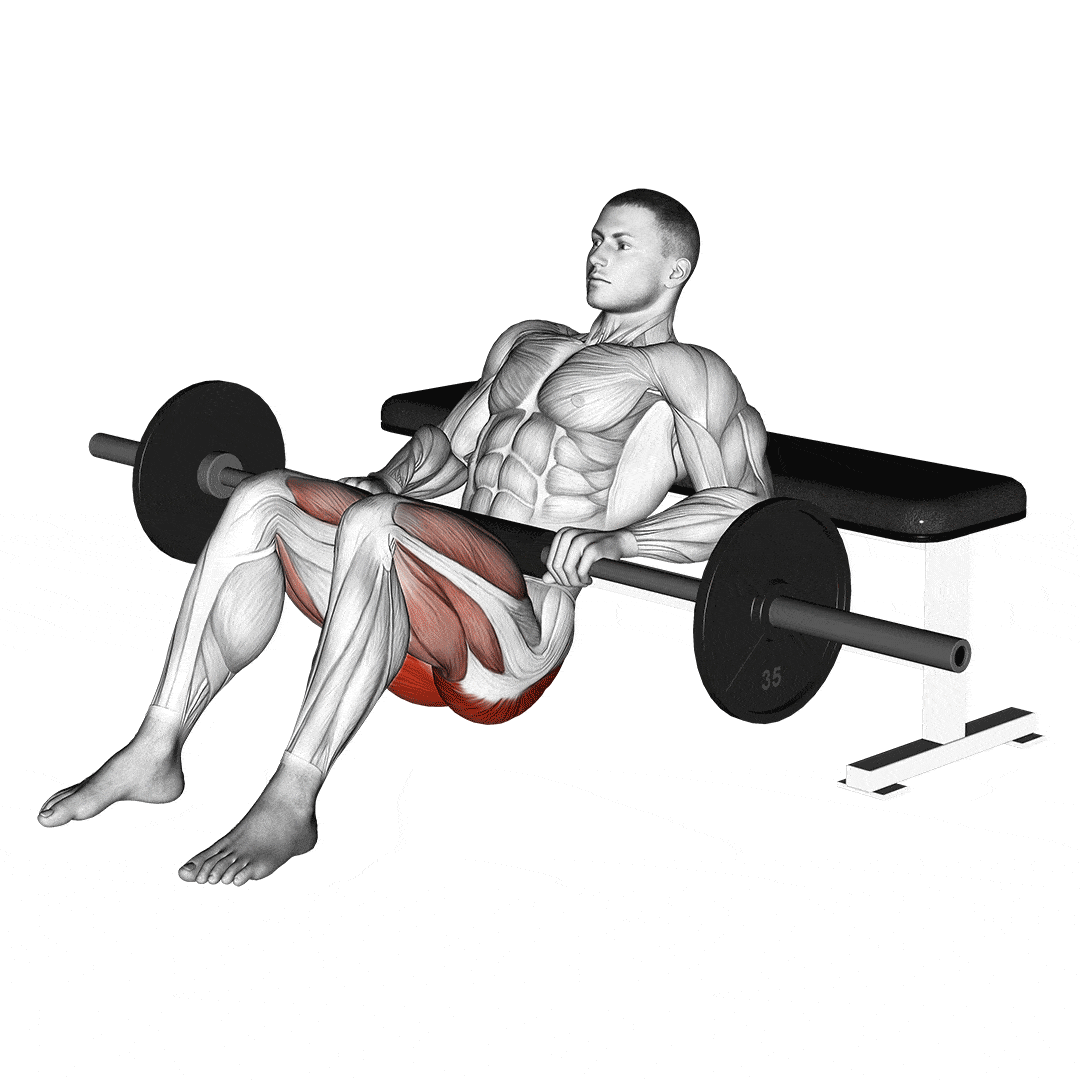
Tips:
- Use a squat bar pad or folded exercise mat to protect your hips from the barbell.
- Pull your toes up and your feet back to maximize hamstring engagement.
- Pause for 2-3 seconds at the top of each rep for best results.
3. Standing cable leg curl
When it comes to hamstring training, you almost always have to choose between knee flexion and hip extension exercises. However, with standing cable leg curls, you can perform both these movements, creating a unique and very intense contraction in your leg biceps. Go light and focus on squeezing your hammies as hard as you can. Don’t be surprised if your hamstrings cramp up the first time you do this exercise.
Steps:
- Put on an ankle cuff and attach it to a low pulley machine. Take 1-2 steps back to tension the cable. Brace your core and bend your supporting knee slightly for balance.
- Extend your hip to the rear and then flex your knee, pulling your foot up to your butt.
- Extend your knee and then your hip to get a stretch in your hamstrings.
- Repeat for the prescribed number of reps and then switch legs.
Tips:
- Hold onto something sturdy for balance, e.g., an exercise bench.
- Lean forward slightly at the hips to increase hamstring stretch.
- Squeeze your leg back, and don’t swing it to eliminate momentum and maximize muscle tension.
4. Kettlebell swings
Some studies suggest that hamstrings are largely composed of type 2b fast-twitch muscle fibers (6). This makes a lot of sense, given their role in explosive hip extension activities such as sprinting and jumping. As such, they may respond well to exercises performed rapidly, such as the kettlebell swing, hence its inclusion in our workout.
Steps:
- Place your kettlebell on the floor and stand behind it. Adopt a shoulder-width stance, bend your knees, and reach forward and grab the handle. Brace your core and engage your glutes and hamstrings.
- “Hike” the kettlebell back through your legs and then drive your hips forward to swing the weight up to shoulder height.
- Swing the weight back between your knees and repeat.
Tips:
- Imagine you are jumping forward with each rep to fully engage your hips and hamstrings.
- Only swing the weight up to shoulder height. Overhead swings take tension off your hamstrings.
- Take care not to round your lower back, as doing so can lead to severe injuries.
5. Nordic curls
Nordic curls are a popular and effective bodyweight hamstring exercise. However, they’re also pretty tough, especially when you do them at the end of an already intense workout. The great thing about this exercise is that you can push your hamstrings to complete eccentric failure in relative safety. This is your final exercise, so give it all you’ve got.
Steps:
- Kneel down and anchor your feet using a barbell, Smith machine, or dedicated Nordic curl device. Your thighs should be vertical, as should your torso.
- Raise your hands and hold them palms-up in front of your shoulders.
- Using your hamstrings to control your descent, lean your body forward and lower yourself down toward the floor. Use your hands to catch yourself and avoid doing a faceplant.
- Use your arms as much as necessary to push yourself back up.
- Continue until you are no longer able to control your descent with your hamstrings.
Tips:
- Use your hamstrings as brakes to control your descent.
- Kneel on a folded exercise mat or foam pad for comfort.
- Try to keep your body straight; hinging makes this exercise easier.
FAQ’s
Do you have a question about our Best Hamstring Workout For Monster Leg Biceps or hamstring training in general? No sweat because we’ve got the answers!
1. Can I change the exercises in this workout?
Any workout, even a great one like this one, should be considered a suggestion for your training and is not set in stone. With that in mind, you are free to make any changes you deem necessary to our hamstring workout plan.
Reasons to modify the workout include equipment available, experience, and personal preference. Reasons NOT to change the workout include you find the exercises hard! After all, it’s those hard exercises and workouts that trigger strength increases and muscle growth.
Also, if you do make changes to the workout, try and use similar exercises, i.e., replace one hip hinge exercise with another, e.g., Romanian deadlifts with conventional deadlifts.
Good hamstring exercises include:
| Lying leg curls | Good mornings | Single-leg deadlift |
| Glute-ham raises | Trap bar deadlift | Stability ball hamstring curl |
| Sumo deadlift | Bulgarian split squat | Reverse hyperextension |
| Cable pull-through | Stiff-leg deadlift | Landmine 180s |
| Sled push | Box squats | Banded hamstring curl |
| Zercher good morning | Jefferson deadlift | Pendulum hip extension |
| Incline treadmill walking | Zercher squats | Seated good mornings |
| Single-leg glute bridge | Deficit deadlifts | Swiss ball rollout |
| Floor glute-ham raise | Reverse lunge | Banded hip thrusts |
| Single-leg Romanian deadlift | Cable kickbacks | Kneeling squat |
Check out our leg training archives for more lower-body training ideas.
2. Can I do this workout at home?
The answer to this question depends on how well-equipped your home gym is! It’s meant to be a gym-based workout, but some of the exercises are pretty low-tech, so you should be able to do them at home.
Feel free to modify the workout so you can do it in your home gym. For example:
| # | Exercise | Sets | Reps | Recovery |
| 1a | Prone resistance band leg curl | 4 | 12-15 | 2 minutes |
| 1b | Dumbbell Romanian deadlift | 4 | 6-8 | |
| 2 | Single-leg hip thrust | 3 | 10-12 | 90 seconds |
| 3 | Resistance band good mornings | 3 | 12-15 | 90 seconds |
| 4 | Kettlebell swings | 3 | 15-20 | 90 seconds |
| 5 | Nordic curls | 2 | AMRAP* | 90 seconds |
All of these exercises require minimal equipment, making the workout more suitable for home use. However, it’s still very similar to our original Monster Leg Biceps workout.
3. How often should I perform this workout?
It’s often tempting to work a muscle group more often when you’re trying to build it quickly. However, this is often a mistake because muscles only grow when you are resting. It’s generally accepted that it takes 48-72 hours for a muscle group to recover from an intense workout.
This gives you a workable training frequency of 2-3 times a week. However, three hammie workouts a week is probably too much for your lower back, which is involved in many other exercises.
So, limit yourself to two hamstring workouts a week to balance your training with adequate time for rest and recovery.
4. Is this workout suitable for beginners?
Beginners don’t usually need to follow specialization programs to bring up lagging body parts because their entire body needs plenty of attention. In fact, doing such a high volume of intense training for one muscle group could lead to overtraining.
Instead, most beginners should work their hamstrings as part of a full-body or split routine, limiting themselves to just a couple of exercises, e.g., hip thrusts and leg curls. Ensure you include a hip extension and knee flexion exercise in your workouts to train both hamstring functions.
5. Will this workout help me avoid hamstring injuries?
Hamstring injuries, especially in sports, are widespread and comprise about 10% of all reported injuries (7). As such, anything you can do to lower your risk could help keep you in the game and off the substitute’s bench.
Stronger muscles are generally more resilient and less injury-prone. This is why athletes spend so much time conditioning their hamstrings. However, as well as strength, you need flexibility, so don’t forget to stretch your hammies.
So, while we can’t guarantee you won’t hurt your hamstrings, common sense suggests that our workout may help lower your risk of injury.
Related: Common Bodybuilding Injuries and How to Avoid Them
6. How can I tweak conventional leg exercises to make them more hamstring-dominant?
Squats, lunges, Bulgarian split squats, step-ups, etc., are quad-dominant exercises that also work the hamstrings, albeit to a lesser degree. However, many such exercises can be modified to increase hamstring engagement.
The most effective way to do this is to hinge forward at the hips to increase the stretch and range of motion in your hamstrings. However, you should also note this strategy puts more strain on your lower back than a more upright torso.
So, by all means, increase your forward lean to hit your hammies more, but also understand this will only have a small effect on hamstring engagement. In most cases, dedicated hamstring training will be more effective.
7. So, squats aren’t enough to build bigger hamstrings?
While there is no denying that squats work your hamstrings, it’s the quadriceps that are doing most of the work. Some studies suggest that it’s a 75-25 split between the quads and hamstrings. As such, while squats are an effective leg exercise, they may leave your hamstrings somewhat understimulated, which will affect their development.
With that in mind, you should supplement squats with some direct hamstring exercises and consider training them separately if you want to maximize hamstring development.
Read also: Bigger Legs Without Squatting
Closing Thoughts
Squats are an incredible exercise that has the potential to strengthen and build your entire body. There is a reason why they’re often called the king of exercises, which is a title they undoubtedly deserve.
However, because of biomechanics and the Lombard paradox, squats are not the best way to develop your hamstrings. Simply put, your quads do most of the work during squats, leaving your hamstrings underdeveloped.
As such, most lifters should include hamstring-specific exercises in their workouts, including exercises for knee flexion and hip extension. These should be done in addition to your squats.
But, if you are serious about beefing up your hamstrings, you may benefit from a more dedicated training approach, hitting your hammies with a specialized workout like the one presented in this article.
Like your biceps, sometimes you need to go the extra mile to maximize muscle strength or size. After all, you wouldn’t bench press to build bigger biceps, would you?
So, use the information in this article to build your best-ever hamstrings. And the next time someone tells you that squats are all you need for your legs, tell them 20th-century American neurophysiologist Warren P. Lombard disagrees and then school them on the biomechanics of the squat.
References
- Harper, D. (n.d.). Etymology of hamstring. Online Etymology Dictionary.
- Rodgers CD, Raja A. Anatomy, Bony Pelvis, and Lower Limb, Hamstring Muscle. Treasure Island (FL): StatPearls Publishing; 2023 Jan.
- Watanabe K, Vieira TM, Gallina A, Kouzaki M, Moritani T. Novel Insights Into Biarticular Muscle Actions Gained From High-Density Electromyogram. Exerc Sport Sci Rev. 2021 Jul 1;49(3):179-187. doi: 10.1249/JES.0000000000000254. PMID: 33927163; PMCID: PMC8191471.
- Marchetti PH, Jarbas da Silva J, Jon Schoenfeld B, Nardi PS, Pecoraro SL, D’Andréa Greve JM, Hartigan E. Muscle Activation Differs between Three Different Knee Joint-Angle Positions during a Maximal Isometric Back Squat Exercise. J Sports Med (Hindawi Publ Corp). 2016;2016:3846123. doi: 10.1155/2016/3846123. Epub 2016 Jul 18. PMID: 27504484; PMCID: PMC4967668.
- Warneke K, Lohmann LH, Lima CD, Hollander K, Konrad A, Zech A, Nakamura M, Wirth K, Keiner M, Behm DG. Physiology of Stretch-Mediated Hypertrophy and Strength Increases: A Narrative Review. Sports Med. 2023 Aug 9. doi: 10.1007/s40279-023-01898-x. Epub ahead of print. PMID: 37556026.
- Garrett WE Jr, Califf JC, Bassett FH 3rd. Histochemical correlates of hamstring injuries. Am J Sports Med. 1984 Mar-Apr;12(2):98-103. doi: 10.1177/036354658401200202. PMID: 6234816.
- Maniar N, Carmichael DS, Hickey JT, Timmins RG, San Jose AJ, Dickson J, Opar D. Incidence and prevalence of hamstring injuries in field-based team sports: a systematic review and meta-analysis of 5952 injuries from over 7 million exposure hours. Br J Sports Med. 2023 Jan;57(2):109-116. doi: 10.1136/bjsports-2021-104936. Epub 2022 Dec 1. PMID: 36455927.




